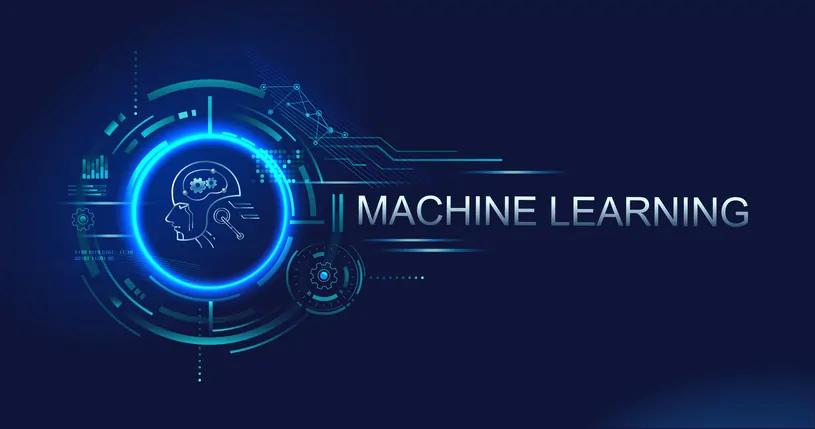Machine Learning in Finance: 2025 Trends & Insights
Machine Learning in Finance: 2025 Trends & Insights
Published by Jessica Weisman-Pitts
Posted on February 6, 2025

Published by Jessica Weisman-Pitts
Posted on February 6, 2025

The financial world is experiencing a seismic shift as machine learning reshapes everything from trading floors to your mobile banking app. As we move through February 2025, let's dive deep into the trends that are actually making waves – not just the buzzwords, but the real changes affecting how money moves in our digital age.
Market Prediction: Beyond the Crystal Ball Remember when predicting market moves was more art than science? Those days are fading fast. According to recent industry analysis, financial institutions are using ML to spot patterns across global markets in ways human traders simply can't match. They're not just looking at stock prices – these systems are processing everything from social media sentiment to geopolitical events, all in real-time.
What's really interesting is how these prediction models have evolved. They're now incorporating alternative data sources that would have seemed bizarre just a few years ago – satellite imagery of retail parking lots, mobile phone location data, and even weather patterns. The result? A much more nuanced understanding of market movements.
Risk Management's New Playbook Banks have gotten dramatically better at spotting trouble before it hits. Today's AI-powered tools can analyze massive volumes of data, helping financial institutions catch potential issues weeks or months before they become real problems. Think of it as a financial radar system that never sleeps.
But here's what's really changed in 2025: these systems aren't just looking at traditional financial metrics. They're analyzing everything from supply chain disruptions to social media sentiment about companies. When a supplier in Asia faces production delays, these systems can now predict the ripple effects through global markets before they happen.
The Revolution in Lending The lending game has been completely transformed. Banks are using ML to look beyond traditional credit scores, considering thousands of data points to make better decisions about who gets approved for loans. The AI credit scoring market is growing at an impressive 25.9% annually, making the whole process faster and, surprisingly, more fair.
What's particularly exciting is how this is opening up financial access to previously underserved communities. By looking at alternative data points – like consistent utility payments or steady gig economy income – ML models are helping banks say "yes" to people who might have been rejected under traditional criteria.
Trading at Light Speed The trading floor of 2025 looks nothing like it did even a few years ago. Machine learning has transformed trading into something that would seem like science fiction to a trader from the past. These systems now execute trades in milliseconds, but speed isn't the whole story anymore.
What's really impressive is how ML systems are now identifying complex market patterns that human traders could never spot. They're processing news, social media, and market data simultaneously, finding correlations that lead to trading opportunities. And they're getting better at it every day.
ESG Integration Gets Smarter One of the biggest shifts in 2025 is how ML is revolutionizing Environmental, Social, and Governance (ESG) investing. According to recent research, AI tools are now capable of processing vast amounts of unstructured data to evaluate companies' true environmental and social impact, going way beyond simple corporate reports.
These systems can now analyze satellite imagery to verify environmental claims, process social media to gauge public sentiment about corporate behavior, and even predict which companies are likely to face ESG-related controversies before they happen.
The Quantum Computing Wild Card Here's something that's just starting to emerge: the intersection of quantum computing and ML in finance. According to industry experts, quantum computing is no longer a distant promise – it's beginning to reshape how financial institutions approach complex problems. While still in its early stages, this combination is showing promise in portfolio optimization and risk analysis at scales previously thought impossible.
Compliance and RegTech Evolution The regulatory technology (RegTech) sector is experiencing explosive growth, with market forecasts showing a CAGR of 31.9% in the coming years. ML is at the heart of this transformation, helping financial institutions stay compliant with ever-changing regulations while reducing costs.
These systems can now:
Personal Finance Gets Personal The democratization of sophisticated financial tools continues to be a major trend. Financial institutions are using ML to offer hyper-personalized services, analyzing spending patterns and financial behaviors to provide advice that actually makes sense for each individual.
This isn't just about categorizing your coffee purchases anymore. These systems can now:
Fraud Detection Evolves As criminals get more sophisticated, so do our defenses. CFOs and financial leaders are increasingly focused on measuring the concrete results of their AI investments, particularly in fraud prevention. The latest ML systems can:
The DeFi Revolution Continues Decentralized Finance (DeFi) is where ML meets blockchain, and it's creating entirely new ways to handle money. These platforms are revolutionizing everything from lending to trading, often without traditional banks in the middle.
The real innovation in 2025 is how ML is making DeFi more accessible and safer:
Cloud Analytics: The Engine Behind It All The shift to cloud-based ML operations has been crucial for enabling all these advances. Financial institutions can now process and analyze data at scales that would have been impossible with on-premises systems. This has enabled:
Looking Ahead: The Future of ML in Finance
As we move through 2025, the integration of machine learning in finance isn't just about automation—it's about transformation. Financial institutions are no longer adopting ML just for efficiency gains; they are demanding real, measurable outcomes that reshape risk management, lending, trading, and customer experience.
The key challenge now isn't whether ML can revolutionize finance—it's how institutions will balance automation with human oversight, innovation with regulation, and efficiency with ethical responsibility.
The future of finance isn't about machines replacing people—it's about leveraging ML to build a financial ecosystem that is more transparent, resilient, and inclusive. The financial institutions that embrace AI-driven decision-making while maintaining accountability and trust will define the next era of banking and finance.
The question isn’t whether ML will transform finance—it’s whether we’ll use it to create a system that is not just faster, but also fairer and more accessible for everyone.
Explore more articles in the Trends category











